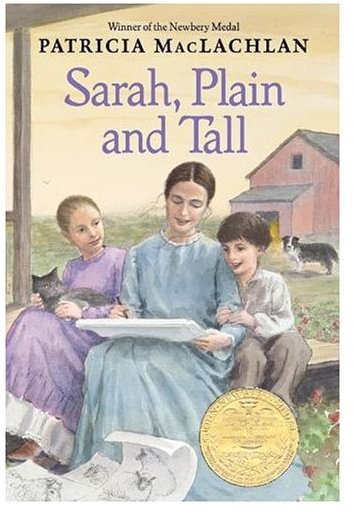English Lesson Plans: Activities for Sarah Plain and Tall Book
Writing Activities
One type of activities for Sarah, Plain and Tall book are writing activities. These activities help students comprehend the book and work on their writing skills at the same time. You can also work in a little history/social studies.
1. This novel by Patricia Machlachlan takes place during the 19th century before there was email or text messaging. In the story, Sarah writes a letter to Anna, Caleb, and Papa, and they each write a letter back to her. One of the writing activities you can do with your students is ask them to write a letter to Sarah, introducing themselves. What would they say in their letters? They should pretend they are living back in the past (the same time as the setting of the novel.) What would their lives be like? Ask students to put details they have learned about this time period in their letters.
2. Divide your students into nine groups (because there are nine chapters in Sarah, Plain and Tall). Assign one of the nine chapters to each group of students. Each group will need to write a chapter summary and draw a story map about their chapter. They will present these written chapter summaries and illustrated story maps to their classmates after everyone has finished reading the book.
3. Show the movie version of this novel. Ask students to write a persuasive essay about which one people should spend time watching/reading. Students who thought the book was better should write in favor of the book and vice-versa for the movie version.
.
Vocabulary Activities
**
Another type of activities for Sarah, Plain and Tall book is vocabulary. Vocabulary lessons no longer have to be boring or difficult. Improve your students’ vocabulary while they are having fun. Some of the vocabulary words in Patricia Machlachlan’s novel may be difficult for your students because they are words that were used in the 19th century, and we don’t hear them much today. These are words such as: hearthstones, flax, windbreak, paddock, and banty. Other words may or may not give some of your students trouble. It depends on their reading levels and abilities to figure out words from the context of a sentence.
One of the easiest vocabulary activities for Sarah, Plain and Tall book is to ask students to write down any words they do not know the meaning of on a piece of paper or a stickee note while they are reading. Gather these notes after a few days and make a list of possible vocabulary words. Then you can play games with these words. For example, your class can play a form of Pictionary or Charades, where one student tries to draw a picture of a vocabulary word or act it out while teammates guess. To make the game easier, you can give students a list of words to choose from.You can also ask students to create crossword or search-a-word puzzles with the new words, and they have to create clues for the words as part of the puzzle.
Reading Activities
Besides writing and vocabulary activities, your Sarah, Plain and Tall unit study should have several reading activities in it. Here are a few that are easy to incoporate into a novel study and encourage your students to enjoy reading this wonderful novel.
1. Students can discuss or write about characters’ feelings throughout the novel by Patricia Machlachlan. For example, how does Anna feel at the beginning of the book about her mother’s death? How does she feel about Sarah? Do her feelings change at the end of the book? Why or why not? Do you think this is realistic?
2. Students can compare and contrast Sarah, Plain and Tall with other historical fiction books they have read. What does the genre historical fiction mean? Discuss and list what makes a book historical fiction. How is Patricia Machlachlan’s story similar or different from the other historical fiction books they have read?
3. No Sarah, Plain and Tall unit study is complete without a look at cause and effect in the novel. This is an easy book to practice this reading skill. Students can create cause and effect pairs of their own, or they can answer questions about cause and effect in reading response journals and then have a discussion. For example, what causes Sarah to leave her home and come stay with Caleb, Anna, and their father? What causes Sarah to set up seashells in her room on her windowsill? What is the effect of winter on the family?
4. Students can also work on their prediction skills while they are reading Sarah, Plain and Tall. Caleb worries that Sarah will leave the family, and he doesn’t want her to. He looks for signs from Sarah that she plans to stay. Ask students to predict whether or not they think Sarah will stay with the family or if she will go back home. Tell students to write down their predictions, along with a reason for their opinions. Discuss predictions together in class before reading the end of the book together.
A Sarah, Plain and Tall unit study will help students work on reading, writing, and vocabulary skills. If students enjoy this novel and learn from it, they can read more of Patricia Maclachlan’s work and her sequels.
Resources
Author’s experience as an elementary classroom teacher and Title I Reading teacher
Machlachlan, Patricia. Sarah, Plain and Tall. Harper Collins, 2004.
